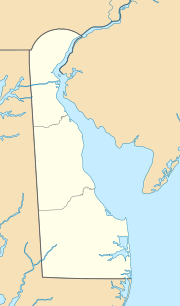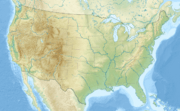Herring Creek (Rehoboth Bay tributary) facts for kids
Quick facts for kids Herring Creek |
|
|---|---|
| Other name(s) | Tributary to Rehoboth Bay |
| Country | United States |
| State | Delaware |
| County | Sussex |
| Physical characteristics | |
| Main source | confluence of Burton Prong and Hopkins Prong just south of Angola Beach 0 ft (0 m) 38°39′26″N 075°10′05″W / 38.65722°N 75.16806°W |
| River mouth | Rehoboth Bay Angola Landing 0 ft (0 m) 38°38′34″N 075°08′00″W / 38.64278°N 75.13333°W |
| Length | 2.85 mi (4.59 km) |
| Basin features | |
| Progression | southeast |
| River system | Rehoboth Bay |
| Basin size | 32.82 square miles (85.0 km2) |
| Tributaries |
|
Herring Creek is a small but important waterway in Delaware. It's about 2.85 miles (4.59 kilometers) long. This creek flows into a larger body of water called Rehoboth Bay. It's located in Sussex County, Delaware, and plays a role in the local environment.
Where Does Herring Creek Begin and End?
Herring Creek starts when two smaller streams join together. These streams are called Burton Prong and Hopkins Prong. This meeting point is south of a place called Angola Beach in Sussex County, Delaware.
From there, Herring Creek flows towards the southeast. It eventually reaches and joins Rehoboth Bay. This happens near a spot known as Angola Landing.
What is a Watershed?
Imagine a big bowl where all the rain and water flow into one main stream or river. That "bowl" is called a watershed. Herring Creek's watershed covers an area of about 32.82 square miles (85 square kilometers).
This area gets about 45 inches (114 centimeters) of rain each year. About 23.7% of the land in this watershed is covered by forests. Forests are important because they help keep the water clean.



